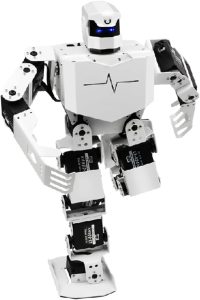Cohere co-founder Nick Frosst Advocates Realism in AI Capabilities

Artificial intelligence is evolving rapidly, and it’s easy to get swept up in the hype. However, not everyone is convinced that we’re heading towards a future dominated by ‘digital gods.’
Nick Frosst, co-founder of Cohere, believes it’s essential to have a realistic understanding of what AI can and cannot do. During his recent appearance on a podcast, he shared his insights on the current state and future potential of AI technology.
The Bubble Debate
AI companies are attracting significant investments and achieving high valuations early on. This trend has led many to declare the AI industry a bubble.
Nick Frosst, co-founder of Cohere, disagrees with this notion. He acknowledges the excitement but believes the term ‘bubble’ undermines the genuine advancements being made.
“Frequently I’ll run into something where I’ll see somebody using our model, and they will have enabled some completely new feature that wasn’t possible before,” Frosst said.
Tangible Value in AI
Frosst argues that the practical applications of AI demonstrate its tangible value, making it difficult to dismiss as mere hype. “It’s hard for there to be a complete bubble when you have something so useful,” he stated.
However, he doesn’t think the industry will achieve artificial general intelligence, or human-level intelligence, anytime soon despite the rapid advancements.
Realistic Expectations
Frosst emphasized the importance of setting realistic expectations around AI. He points out that while the technology is incredibly powerful, it won’t become a ‘digital god.’
This perspective contrasts with other leaders in the field, like Mark Zuckerberg and Jensen Huang, who foresee a more transformative future for AI.
“I don’t think we’re gonna have digital gods anywhere, anytime soon,” Frosst said, encouraging a more grounded view of AI’s potential.
Cohere’s Business Model
Cohere focuses on what AI technology can realistically achieve and what types of neural networks offer the most value.
The company builds its business model on research by co-founder Aidan Gomez, known for developing the transformer model that sparked the generative AI era.
Their approach involves using a foundational model as a base to create custom models for enterprise clients, aligning with their realistic view of AI’s capabilities.
Importance of Foundational Models
Frosst believes larger, foundational models will dominate the market among AI service providers.
He doesn’t think companies should rely on a single model to tackle all tasks—consumer, B2B, or product-focused.
This nuanced perspective highlights the need for specialized models tailored to specific needs, reinforcing the importance of understanding AI’s limitations.
Sober Approach to AI Value
Cohere maintains a sober outlook on the value AI can deliver, avoiding extreme predictions on either end of the spectrum.
“We’re pretty sober about how this technology is useful, and what value it can deliver,” Frosst remarked. This balanced viewpoint helps avoid some of the industry’s more extreme rhetoric.
The focus remains on leveraging AI’s strengths while acknowledging and respecting its limitations.
Adjusting Expectations
As the AI landscape evolves, it’s crucial for both companies and the public to adjust their expectations accordingly.
Realism in AI’s capabilities ensures that its current and future applications are better understood and appreciated, avoiding disillusionment.
Frosst’s insights encourage a balanced approach, advocating for both innovation and pragmatism.
In conclusion, Nick Frosst’s perspective on AI advocates for a balanced and realistic understanding of its capabilities. This approach not only highlights the tangible value AI can provide but also tempers expectations regarding its future potential.
By focusing on practical applications and grounded expectations, Frosst’s viewpoint offers a refreshing take on the AI industry’s evolution. Ultimately, this balanced perspective can help drive more meaningful and sustainable advancements in AI technology.





